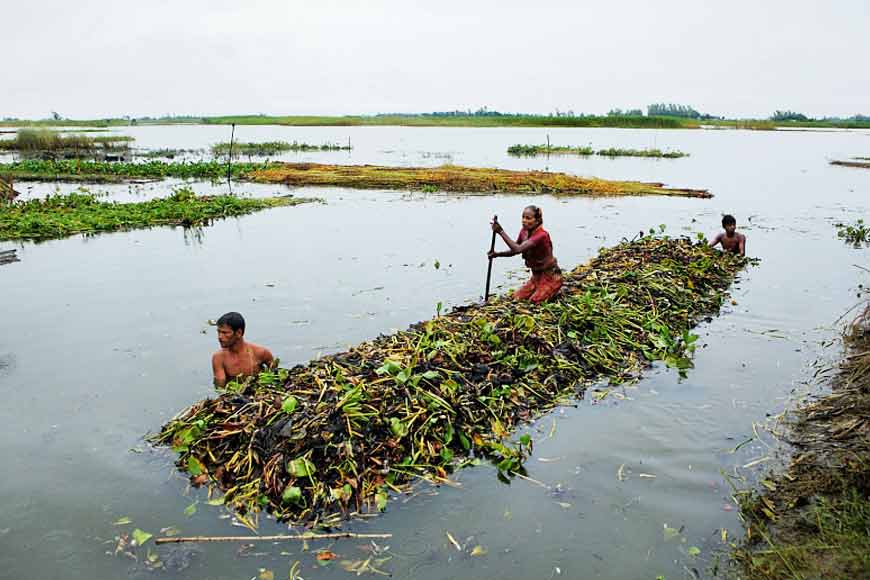Sundarbans farmers turn to floating farms to counter cyclone crisis

On May 26, 2021, Cyclone Yaas slammed into the northern coast of the Bay of Bengal during high tides. Massive storm surges caused saline water to overrun vast areas of the Sundarbans, ruining farmland and freshwater ponds. In recent times, one cyclone after another, be it Bulbul, Amphan or Yaas, has caused repeated breaching of embankments, leading to large-scale property damage and flooding of agricultural fields, turning them unproductive. Seawater intrusion has made large chunks of coastal land useless for growing crops and vast swathes of land are still under stagnant saline water.
Given the immense impact on traditional farming methods, most farmers in low-lying areas of the Sundarbans have now resorted to a form of hydroponics called floating vegetable gardens. Using this unique farming technique, they are commercially growing seasonal vegetables like aubergine, tomato, cucumber, ridge gourd, bitter gourd and spices like fenugreek, coriander, onion, ginger, etc.
Floating farms allow the cultivation of vegetables and fruits on structures that float on water. It is a way to utilise land which has been waterlogged for prolonged periods. Rafts made of bamboo are kept afloat using drums, and vegetables cultivated in grow bags on the rafts. These are filled with compost, coco peat, biochar, sawdust and organic fertilisers. Solar power is used to transform saltwater into freshwater and the plants are watered with the refined water. Solar-powered pumps are also utilised to water the plants. These pump water up into the grow bags through an irrigation system installed on the platform. The grow bags retain moisture and minimise water loss; holes in the bags mean that excess water can drain away into the land below.
The technology helps farmers adapt to regular or prolonged flooding and combat food insecurity among the landless poor. The entire structure is covered with nets to stop birds from damaging the harvest. And since the platforms rise with the water level, flooding does not damage the produce, while in conventional agriculture, crops are washed away or spoiled from being waterlogged during flooding.
So far, approximately 11,000 square feet of floating farms have been created. The pilot project was initiated in Kumirmari, Amtali, Punijali, Chhota Mollakhali and Sandeshkhali, funded by Japan Social Development. The floating farms are cost-effective compared to traditional agriculture, since there is no need for tilling and sowing. Besides, the solvents (compost) can be recycled too. The floating beds are thus less labour-intensive than field agriculture, which requires digging, planting and irrigation.
In some areas, fish farms are being set up in the same wated body as the floating vegetable beds, since pisciculture too has been severely affected by the floods. Cages have now been introduced to counter this problem. Three types of cages are being sunk to different levels of a pond for fish farming. Farmers are using the same method for farming crabs and lobsters and are already finding it commercially viable. When embankments disintegrate and saline water enters freshwater ponds, different species of freshwater fish cultivated painstakingly by fish farmers die. But now, if brackish water inundates the ponds, the cages can be quickly removed to a safe place.











